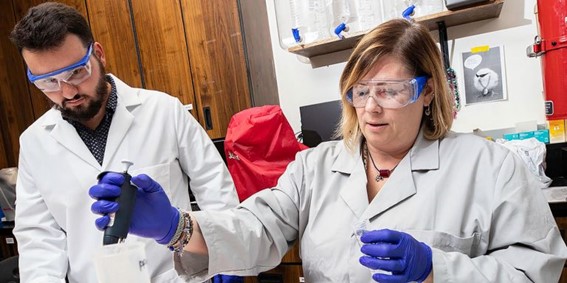September 2022: Dr. Jamie DeWitt
Professor of Pharmacology and Toxicology at East Carolina University
What level of PFAS is safe in my drinking water?

Well, it depends on what is meant by “safe.” If safe means no risk of undesirable health effects at all, then the only safe level is zero. If safe means with some risk of undesirable health effects, but low risk for most people, even those who are most sensitive, then some non-zero number might be that level. For example, the updates health advisory levels (HALs) for two PFAS (PFOA and PFOS) are very, very low, even below the level where they can be detected with sensitive measurement instruments. It also is important to remember that PFAS are synthetic chemicals that do not belong in our drinking water (or in our bodies).
How does PFAS exposure affect the health of people in North Carolina?
At least one study of the health of some people living in North Carolina is ongoing (led by Dr. Jane Hoppin at North Carolina State University), so the answer to that question currently is based on studies of other people exposed to PFAS from other parts of the US and world. These studies have shown that exposure to these PFAS is linked to:
- liver disease
- suppression of vaccination response
- increases in cholesterol
- pregnancy-induced hypertension and preeclampsia
- increased risk of lower birth rate
- kidney and testicular cancer.
How is your research benefitting the citizens of North Carolina?
My Collaboratory-funded research focuses on PFAS found in North Carolina’s waterways that don’t appear to have been studied for their ability to affect the immune system. We are studying the potential for these “understudied” PFAS to affect the vaccine response in a model system (i.e., not in humans) as well as other markers that help us to describe potential effects of chemicals on the immune system. Our data could then help decision-makers determine if advisories for the PFAS we study are necessary to protect our health.
“Once we start to get a handle on what these chemicals can do, we can then start to build models to better predict what the ones we haven’t yet studied can do so that we can move forward with managing PFAS as a class or at least in very large subgroups.”
Jamie DeWitt
